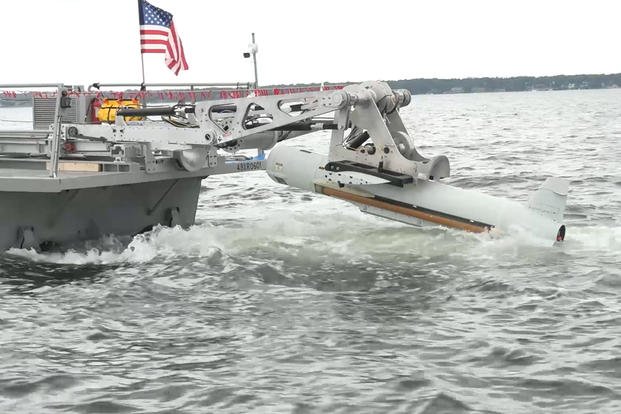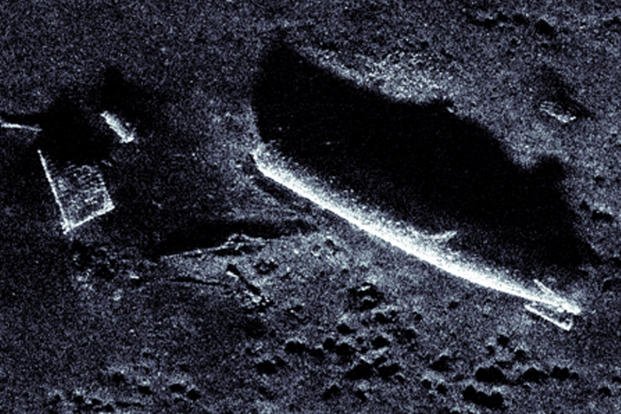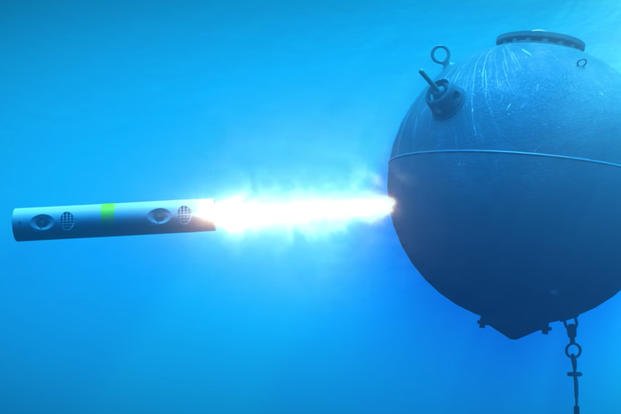Today's naval minesweeping processes involve wooden boats, divers and large amounts of patience. All that is about to change, though, as minesweeping takes a big leap into the future.
Naval mines are in widespread use because they're incredibly effective. Mines endangered the Union Fleet at Mobile Bay in Alabama, crippled German shipping during World War I and Japanese shipping during WWII, and were able to hold the entire U.S. Navy at bay for a week during the Korean War.
Defense contractor Raytheon estimates there are currently 250,000 mines around the world, just waiting to be laid in the oceans. Many of those are held by Iran, which regularly threatens to close the Strait of Hormuz with them.
Modern mines aren't necessarily the big round contraptions with spikes just waiting for a ship to float into them that some imagine. Mine technology has evolved to use different trigger mechanisms, including seismic, acoustic, pressure and magnetic.
But the U.S. Navy's means of detecting and defusing them hasn't changed much.
"All of the current methods we have are very slow; very, very dangerous; cumbersome; and quite expensive," Wade Knudson, a former naval aviator and now senior director of Undersea Warfare Systems at Raytheon, told Military.com. "Areas that state actors might choose to mine are vitally important and considerable in size. Somebody can easily disrupt commerce and the world's economy could suffer from that, depending on where that were to occur."
The Navy has 11 minesweepers, many still clearing mines the old-fashioned way. They hunt for mines using sonar; dispatch divers to disable them; and then tow the mines away.
To clear the entire Persian Gulf of mines would require many of the Navy's minesweeping ships out in the water for a "sustained period of time," according to one officer quoted in a ProPublica report about the service's aging mine-clearing ships, many of which are past retirement age.
That report complained of ancient sonar systems, run on Windows 2000, finding not only mines, but also dishwashers and car parts.
But the Navy is out to make a change. Raytheon and the service have developed a "single sortie detect to engage" system that clears mines 10 times faster than current methods and includes the new AQS-20 sonar system.
If "Single Sortie Detect-to-Engage" sounds like a suicide mission, that's not far off. But there will be no more human divers engaging with mines. This system eliminates that risk.
The unmanned technology's sonar improvements can spot mines from any direction, relay that information in high-definition and then neutralize the explosive using another drone called a "barracuda."
This process is also known as In-Stride Mine Clearance.

Clearing underwater mines can now be a faster, less dangerous process with this technology. An unmanned surface vehicle is deployed into a minefield, be it in an ocean, sea lane or harbor -- anywhere mines can be deployed.
Then the AQS-20 sonar is dropped into the water and towed by the drone ship, searching as it moves. When a mine is detected, the barracuda neutralizer drone is deployed.
Once released, the neutralizer navigates to the mine, identifies it and transmits an HD image of the mine to its human handlers. When it gets confirmation that its target is in fact a mine, the barracuda detonates the explosive, clearing the mine.

The system can repeat the process for nearly any kind of mine, whether on the seabed, the surface or even tethered. Once the mines are cleared, the USV returns to its handlers.
All of this will be just one more mission package available to the Navy's 35 advanced Littoral Combat Ships. The new tech was developed for just $83 million.
"It's the latest technology," Knudson said. "That's why it gives such a good view of those mines. But most importantly, the barracuda is doing the dangerous work to keep sailors as safe as possible during these missions."
-- Blake Stilwell can be reached at blake.stilwell@military.com.
Want to Know More About Military Tech?
Be sure to get the latest news about weapons and military technology, as well as critical info about how to join the military and all the benefits of service. Subscribe to Military.com and receive customized updates delivered straight to your inbox.












